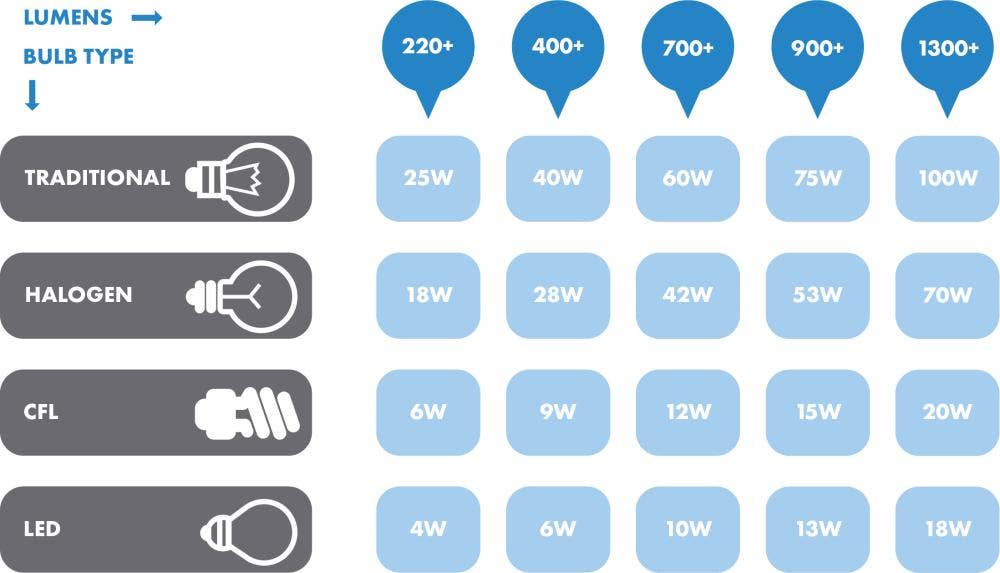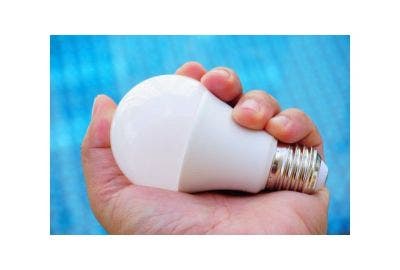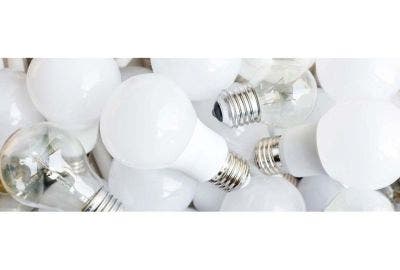You may have heard of lumens, watts and CRI, but what exactly do they mean and how can they help you to choose the best lamp for you?
What Are Watts?
A watt is a unit of power in electrical systems. It measures how much energy is released per second in a system and is used to measure the rate of energy transfer. The more watts a light has, the more energy the lightbulb consumes.
Measuring the Brightness of Lamps
Until recently, the brightness of lightbulbs was measured using watts. The higher the wattage of a lightbulb, the brighter it would be. This allowed for easy understanding of how bright a lightbulb would be; for example, a 40 watt bulb would be brighter than a 10 watt bulb.
However, with the introduction of energy-saving lighting and lightbulbs, this way of measuring brightness became inaccurate. This is due to the efficiency of LED bulbs. For example, a 20 watt LED bulb could be brighter than a 50 watt traditional style bulb.
Using wattage to measure brightness was never the most accurate way to determine the brightness of a bulb as watts is a measure of energy consumption and denotes the power input into a bulb rather than its light output. Because of this, considering LED bulbs and lights, watts do not correlate to the brightness of the light that is being emitted.
This is where lumens have become a useful measurement to denote the brightness of a lightbulb.
What Are Lumens?
Lumens are a unit of measurement for the brightness of a lamp at its source. The more lumens a light source has, the brighter the light is.
Lumens are an effective form of measurement for light sources as it is consistent no matter what the type of the light bulb (LED, fluorescent, halogen, etc.). This means you can compare an LED bulb with a halogen bulb on the same scale and get an accurate result for the brightness of the bulbs.
Lumens and Watts
Lumens are a perfect way for measuring the brightness of a bulb; however, if you’re looking for a bulb that has the right brightness but a low energy output then knowing the wattage of a bulb comes in handy.
A bulb with high lumens and low wattage is going to be more energy-efficient than a bulb with low lumens and a high wattage.
Using lumens and watts together, you can easily determine how energy efficient a light bulb is.

Colour Temperature and CRI
The colour temperature and CRI of a light is also important when it comes to choosing the perfect lighting solution for your situation.
CRI (which is also known as the Colour Rendering Index) is a scale from 0-100 and is used to measure how accurate an artificial light source is at revealing colour compared to a natural light source. As such, the higher the CRI value the better colour matching the light will provide you with. For example, a light with a CRI value of 80+ on the scale is classed as good and a rating of 90+ is classed as excellent.
The colour temperature indicates the colour of the light and is measured in Kelvin. The lower the number of degrees in Kelvin, the warmer the light colour.
The most common colour temperatures are:
2,700K: very warm white light – provides a relaxed atmosphere that’s perfect for home environments.
3,000K: warm white light – perfect for general lighting applications.
4,000K: cool white light – a stimulating colour temperature that promotes alertness making it perfect for environments like offices.
5,500K - 6,5000K: natural daylight – this colour temperature is ideal wherever bright light is required and is perfect for applications that need perfect colour matching.

Heamar sell a variety of different lamps of varying brightness, wattage and colour temperature to suit a variety of applications from brands including Daylight Company and Native Lighting.





















